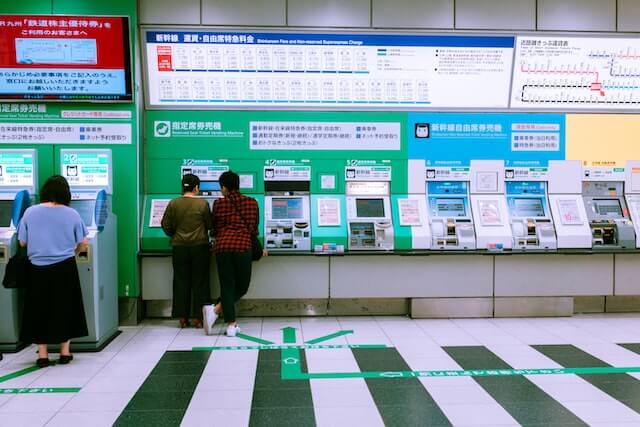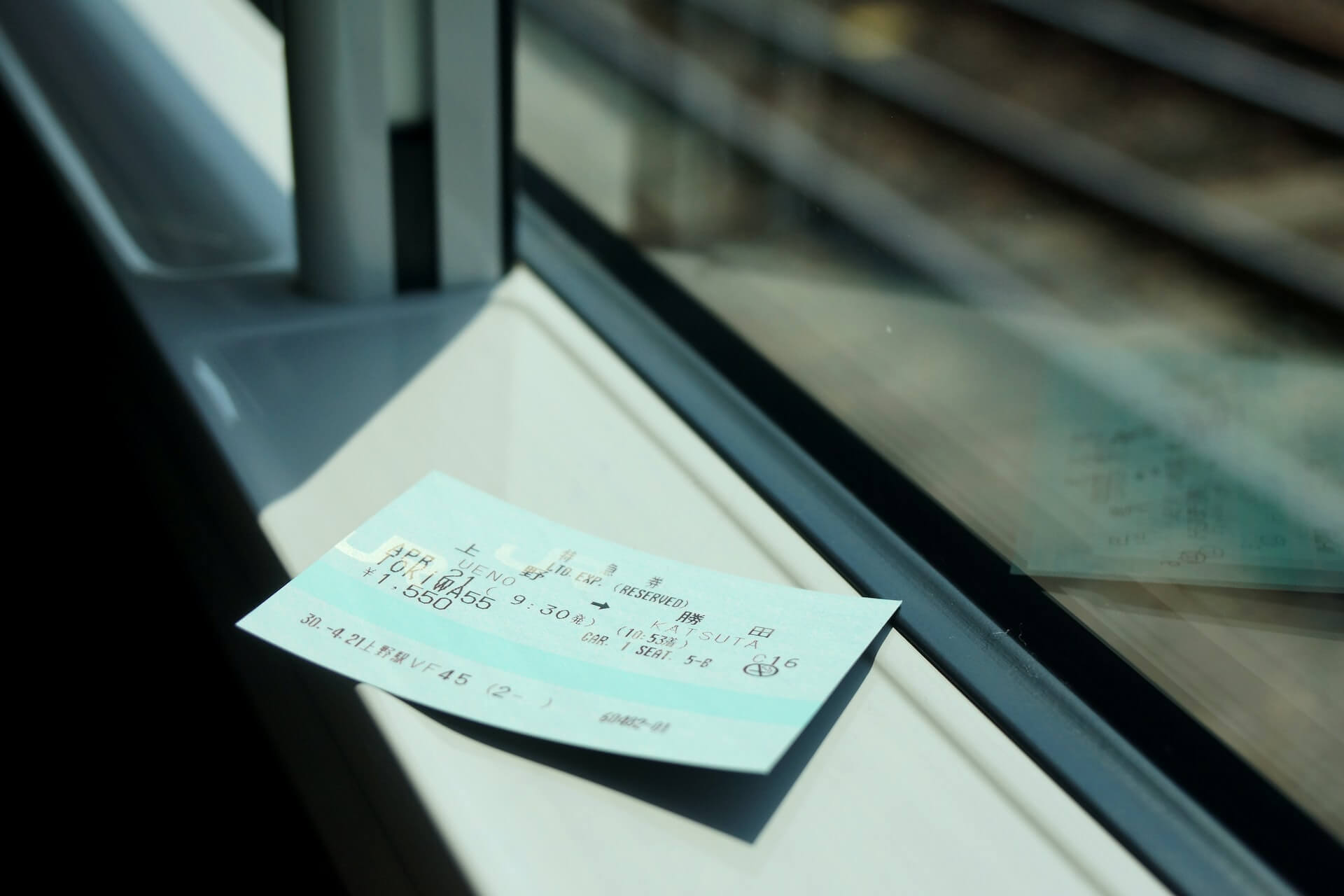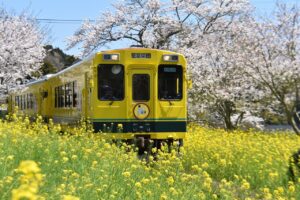Who wants to hop on the bullet train?!
Silly question. Everyone wants to hop on the bullet train. It’s basically an airplane that slices and dices through mountains and rivers. Unfortunately, it can be as complicated as air travel, too. But if you follow a few simple steps, it’s really not so bad.
Here’s how to get bullet train tickets in Japan:
- Plan your route thoroughly
- Decide what type of bullet train you want to ride
- Decide on unreserved, reserved, or green car
- Buy tickets
- Take all of your tickets with you when riding
It takes a bit of planning, but after this article clears up the steps you’ll be off to the races.
Step 1. Plan Your Route Thoroughly
“Duh. Of course you need to know where you’re going,” you say.
And maybe you’re right. But for those who are unfamiliar with shinkansen (bullet train) travel, it needs to be mentioned.
That’s because not every train station in Japan is a shinkansen station. And not every shinkansen station services every type of bullet train (more on that later).
So, the first step you need to take is figuring out roughly where you want to start your journey and where you want to end up. Step 1.1 is where you find the closest stations to suit your needs.

Pulling an example from a previous article’s list of places to go to in Japan, if you want to go from Tokyo to Nara, you’ll need to take the bullet train to Kyoto station first. After that, it’s local or express trains.
Google maps or train apps like Hyperdia are your friend as they offer different routes and tell you where to make your transfers.
Step 2. Decide What Type of Bullet Train You Want to Ride
Another potential shocker for those making their first trip to Japan is that there are different types of shinkansen. Here’s a list of the ones you’re likeliest to see while hopping around Kyoto and Tokyo:
- Nozomi (the fastest one)
- Hikari
- Kodama
- Mizuho
- Sakura
If you’re using Japan’s tourist train pass, known as the JR Pass, you’re limited to all but the Nozomi and Mizuho trains (the two fastest ones). So when planning your route, you’ll need to reserve the right ones.
Everyone else can take their pick from the trains above, with the faster trains costing slightly more.
However, the faster trains also only stop at major shinkansen stations. So if you’re planning on going to a more obscure area, you may want to check to make sure the station you’re shooting for serves the right trains.
Once again, train scheduling websites and apps will help you with this.

Step 3. Decide on Unreserved, Reserved, or Green Car
Once you know what train you want to take, it’s time to think about reserving or not reserving seats.
Unreserved tickets are a little cheaper than reserved, though you run the risk of having to stand for a big chunk of the journey. On the other hand, if you have a JR Pass, you can reserve tickets for no extra charge. For more on the cost of train tickets and whether a JR Pass is worth it for you, take a look at our previous article.
On top of that, there’s also the first-class option, known as the “green car.” These tickets are even more expensive than reserved seats, and they’re not open to JR Pass users unless you opt for the upgraded pass.
The green car provides you with a bit more room and slightly comfier seats, but overall the change isn’t really enough to justify the extra price. Regular reserved seats are already spotless.
Step 4. Buy Tickets
Finally, it’s time to buy your tickets. This is probably the most stressful part, but it’s gotten a lot easier over the years.
Instead of having to book in person, there are now English services at all JR ticketing machines. You can also book online, whether or not you’re actually buying bullet train tickets in Japan.
At a Ticket Counter
There’s a part of every major train station that has a shinkansen ticketing counter. If you can’t speak English, don’t worry. In most cases the staff will be able to speak English, though you may run into troubles in more rural prefectures throughout Japan.
Regardless, all you need to do to book a train is tell the staff member at the counter where you want to go, what type of seat you want, and possibly the type of train you want to ride. If you have a JR Pass, present it there and ask for a reserved seat.
At a Ticket Machine
To avoid all human interactions, mosey on up to any ticketing machine near the bullet train area’s entrance. After you select the English option, the machine will prompt you to select your destination, the type of ticket, etc. The screen may ask you to enter your departure station, so be careful to choose the right starting point.

The main difference for JR Pass users is that they’ll need to scan the QR code on their pass to proceed. Whether you have a pass or not, your bullet train tickets will print off then and there. Make sure you hold onto them all, cuz you’ll need ‘em!
Reserve Online
With or without a JR Pass, you can make bullet train reservations online in Japan. Just hop onto any of the JR branch websites, such as JR West and fill out the information. In most cases, you’ll buy your shinkansen tickets online before picking them up at a train station machine later on, but there are also services that deliver tickets to hotels.
Step 5. Take All of Your Tickets With You When Riding
After you go through step 4, you should have several tickets for the bullet train. Or at least they’ll all look like tickets printed on the same thick, light blue JR paper.
If you purchase your tickets from a counter, the staff member will explain the differences between your many tickets. The JR East website also has a good explanation of the different train tickets you’ll receive.
Depending on the trip you’re making, you may have some local train tickets in the mix. For example, if you’ve arranged a trip to Nara, you’ll receive one or two tickets for the Tokyo to Kyoto portion of the trip (depending on the type of train, seat, etc.). You’ll need to pop these into the turnstile at Tokyo station.
You’ll also get an express train ticket from Kyoto to Nara on top of that. You won’t need to use that ticket until you’re ready for that last part of your journey.
The locations on your bullet train and express train tickets will be written in Japanese and English, but it may be a good idea to take notes. Staff members on the trains may also check your tickets from time to time, so keep ‘em handy and enjoy the ride!
How Much Does a Bullet Train Ticket Cost in Japan?

Bullet train ticket prices vary depending on several factors. Reserved seats are more expensive than unreserved and the fastest shinkansen are more expensive than the slightly slower ones. For a relatively short trip, you may end up paying ¥5,000 ($37). Longer trips are more expensive.
For example, a bullet train ticket from Tokyo to Osaka is roughly ¥16,500 ($121). This price can move up and down based on what bonuses you add or take away.
Conclusion
To buy bullet train tickets in Japan you’ll need to plan your route, decide on your train and seat type, and purchase tickets either in person or online. Make sure you keep all of your tickets for your journey and enjoy the ride!




